Americans celebrated as Apollo 11 blasted off toward the moon on July 16, 1969, but people in Raton, New Mexico, were taking part in a historic event of their own. While millions watched day-long coverage of the lunar mission, 3,947 horse-race fans in the grandstands cheered during the first Land of Enchantment Derby at La Mesa Park.
Park-goers were focused on a horse named Rag Tag Circus, which looped around the mile-long track in one minute and 39 seconds, winning the race by 17 lengths and earning his owner $21,690. The feat was documented on the second page of The Raton Range newspaper the next day; coverage of the moon landing graced the front.
Only an event as historic as the moon landing could have kept horse racing from being the paper’s top story. No amount of media coverage could keep people’s minds off what mattered most to Raton: the race track.
“Television wasn’t even really that good,” says long-time Raton race horse trainer Rex Coram. “When most of the world was getting ready for the moon landing, Raton was just getting ready for the Land of Enchantment stakes.”
In the nearly 50 years that La Mesa Park was open from 1946 to 1992, Raton’s preoccupation with race horses was unquenchable. The town’s population nearly doubled during the summer racing months, and business ramped up at hotels and restaurants. Jockeys, trainers, gamblers, horse owners, and fans came to make new friends, catch up with old ones, and participate in a timeless American sporting tradition – one that Raton put its own spin on.
Fast horses may have propelled their handlers to fame, but the handlers – and everyone else involved with the track – put Raton on the map. La Mesa Park, called “The Friendly Track,” was known more for its people than its horses.
Keeping Track

July 2022 marks the 30th anniversary of La Mesa Park’s closure, which brought 46 years of thoroughbred and quarter-horse racing to an end. Three decades later, people in Raton talk about the park as if horses’ hooves were still pounding the ground.
La Mesa Park was never as big as Churchill Downs or Belmont Park, but when it opened in August 1946, the park was billed as “one of the finest racing plants in the world,” according to a story in The Range. It was New Mexico’s first officially licensed track, introducing the sport of horse racing to a state where it would become popular. Tracks later sprang up in Ruidoso, Albuquerque, Sunland Park, and Santa Fe.
Cool temperatures and stunning landscapes drew people to Raton year after year. But the best part of La Mesa Park, track-goers say, was the pleasant, helpful, and encouraging demeanor the racers shared.

Racing was an instant draw for Raton. Every motel room in town was sold during the first weekend the track was open, so town residents offered rooms in their homes to visitors. “This is one of the earliest examples of La Mesa earning the title of the friendly track,” a 1982 story in The Range reported. The author of the piece, Bill Donati, has since become one of the track’s unofficial historians. He worked at a local radio station in the 1970s, and when the track’s announcer retired, Donati had the opportunity to take his broadcast career in a new direction — at least during the racing season.
“It was absolutely one of the best jobs I ever had,” Donati says of the track. “Not only the public address, but the live aspect. That’s always a hook. The roar of the crowd, so to speak. We didn’t get huge crowds. Maybe 2,000 or 3,000 people. But for us, it was quite a roar. It was exciting, and that was part of the allure, not only for me, but for many other people.”

A Growing Family

For everyone involved in horse racing, the stakes are high. Race days are tense, as gamblers pry for information about horses so they can make a good bet. Trainers and owners work carefully to prevent even minor injuries that could keep their horses from winning the big race. At La Mesa Park, though, camaraderie superseded competition – especially in a time of need.
Coram, who had one of the longest consecutive tenures of any trainer at the track, had three horses to race one summer day when his wife, Elaine, went into labor. Her sister took her to the hospital, but Rex needed to finish the races. That’s when fellow trainer Emerald “Junior” Clark spoke up, telling Coram to take care of his wife; Clark and others would take care of his horses.
“The thing that I love the most about La Mesa Park is the friendliness and cooperation of all of the other trainers,” Coram says. “If you needed help, there was somebody ready to help you, no matter what. If I had an emergency, I had somebody that would take care of my horses for two or three days. … It was a friendly competition.”
Though from Oklahoma, Coram trained in Winnipeg, Canada, before coming to La Mesa Park. In all his years of training, no place compared to Raton.
“Anytime you went to the paddock and you had several horses, there was always another trainer that would be there to help you saddle,” Coram says. “You didn’t always find that at other race tracks.”
Donati can relate. He once missed announcing an entire race because he was choking on a piece of popcorn, and as the race ended, people looked toward the announcer’s stand in confusion.
“I finally came on and said, ‘I’m okay, but could somebody send the announcer a drink, please?’ And so I got three or four drinks,” Donati says. “That was part of the friendly aspect. It was a family. It really was.”
Generational Ties
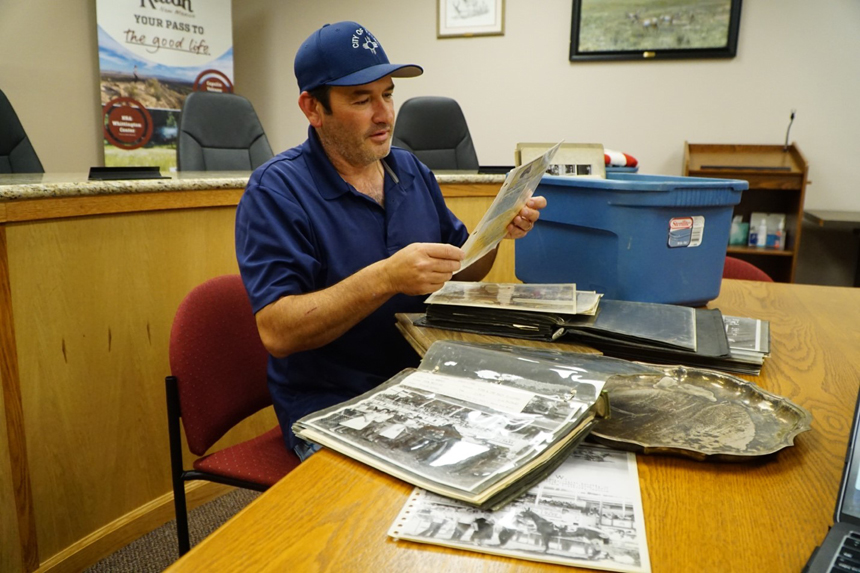
The day Rag Tag Circus won the first Land of Enchantment Derby is a day Jason Phillips won’t forget. It was “the best race from my family’s standpoint, ever,” he says, though it was far from their only race. For Phillips, the paternal grandson of Rag Tag Circus trainer Jack Phillips, caring for the track was a longtime family business. It’s fitting, he says; in Greek, the name Phillip means “lover of horses.”
La Mesa Park was a major employer in Raton, and generations of families worked and raced there. When he was 11, Phillips was the track’s photo-finish runner, posting photos in the grandstands of the winning horse. His father and mother also worked in photography at the park, and his maternal grandfather maintained the park’s track.
Phillips can picture what the park looked like on race days: Jockeys wore brightly colored uniforms of blue, red, and pink while walking around the paddocks, covered by blue skies and surrounded by tall mesas. The smell of hay, fresh dirt, and fans’ beer wafted around the park on sunny summer afternoons.
“Some of the best times, some of the nicest people I’ve ever met were everything from the top of the corporate structure at La Mesa Park to the grooms or the people that worked in the kitchen,” Phillips says. “I think for each person, it’s different, but it is a universal truth: You don’t really hear bad stories at La Mesa Park.”
Phillips has passed stories of the track onto his children, and they’ve taken trips to other races. He wants them to learn what the sport was like. Each journey, however, reminds him that La Mesa Park wasn’t like the others.
“This year, we’re going on vacation to Dalmar,” Phillips says. “We’re going to go watch horse races with my kids and make sure the fifth generation gets to see it. But if I could trade a day at Dalmar for a day in 1985 at La Mesa Park, I would trade it. It was just that much fun.”
End of an Era

1988 was the beginning of the end at La Mesa Park. The track faced closure that year, but 32 local business owners and community members came together to fund the park, according to a 1995 article by the Associated Press. Each entity put up roughly $25,000.
The effort may have temporarily alleviated some financial woes, but it couldn’t stave off economic downturns, especially in the oil industry, or the declining popularity of horse racing.
The park’s ownership and management had changed multiple times since the 1960s, and as finances grew tighter, racers went to bigger facilities.
Behind closed doors, tense discussions about the future of the park were taking place, Donati says. They came to a head on July 27, 1992.
“The Horsemen’s Association and the La Mesa Park board of directors could not come to a mutual agreement on what they wanted to do and how they wanted to continue,” Donati says. “So, with only a few days left in the racing season, they called me up and said, ‘Bill, you need to make an announcement: “Ladies and gentlemen, thank you for your attendance. The rest of the races today are canceled, and they’re canceled until further notice. Thank you very much.”’
“That’s the announcement we made, and that was the last day of racing at La Mesa Park.”
When the track closed, there was a sliver of hope that it could be reopened that winter and used for simulcast racing, which some park officials thought would bring in new streams of revenue, Donati says. However, the State of New Mexico required tracks to have a certain number of live racing days before switching to simulcast. When the track closed, it was just a few days short of fulfilling the requirement.
For the next year, owners, trainers, fans, and community members were somewhere between a state of shock and a state of disbelief.
“It feels like somebody died – somebody that you loved died,” says Elaine Coram. “It’s such a loss. You wondered, ‘Now what do we do?’”
Still Standing
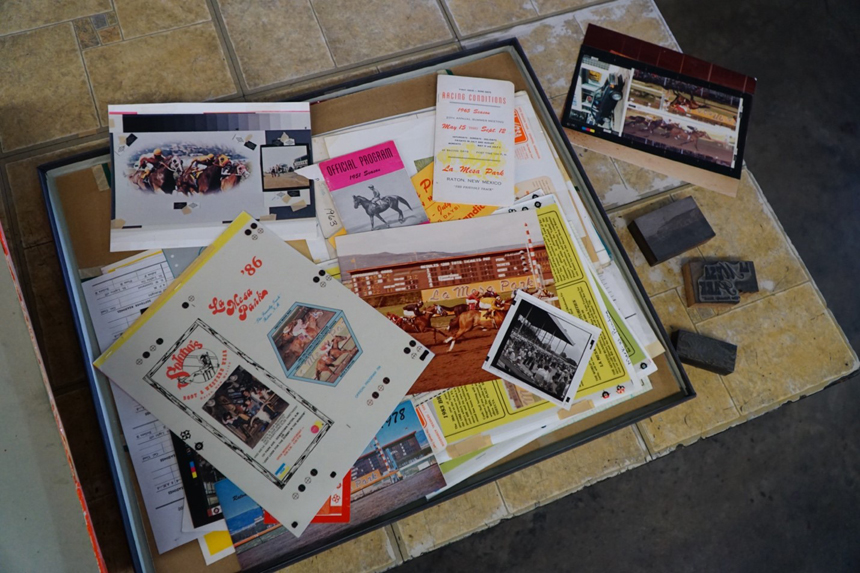
All was quiet at Mark-Us Printing & Stationery in Raton on a recent Wednesday morning. Vintage printing presses lined the north wall of the shop, and shelves held dusty, orange boxes with paste-up sheets and photo-negatives used to print graduation announcements and forms for businesses. Written in black on one box were the words “La Mesa Park.”
The shop handled many of the track’s printing needs, including pamphlets that listed upcoming races and their trainers. It was one of the businesses that suffered when the track closed. Motels aren’t nearly as full as they once were, and streets near the park are lined with boarded-up businesses.
Printer Marsha Hyde, who worked at the park as a teenager, smiles as she sifts through advertising templates and strips of text. They’re some of the most visible reminders of the track, though they’re not the only ones.
Much of the park complex was dismantled after its closure. Horse barns and other structures were demolished, leaving the nearly 200-acre swatch of land mostly empty. A “For Rent” sign with a phone number to a land management office in Florida is posted near the highway. However, the large grandstands, casting long shadows over the dirt race track in the evening sun, are intact.
Hyde, like other people in Raton, sees the park as a forlorn reminder of better days. When she looks out over the park, she envisions action-packed race days. She sold tickets at the track before she moved into the “money room,” where winning tickets were cashed in. Her favorite part of a race day, however, was the celebration afterward.
“Some of them were pretty high-dollar races,” Hyde said. “It was real exciting. If you knew somebody who had a winning horse, then you knew where the party might be that day. And that was what it was all about.”
You didn’t have to be invited to a party to eat, drink, and be merry, though. The track’s customers also patronized the town’s bars, offering live music and collecting low cover charges. When the track closed, those days went with it.
“It was quite the party,” Hyde said. “It was fun growing up in Raton during that time because everything was busy.”
Hyde didn’t work at the print shop when the track was open, but she operates the same presses that printed announcements for parties like those she attended. Yet high-strung nights aren’t what she reflects on the most.
“I miss the people,” she says.
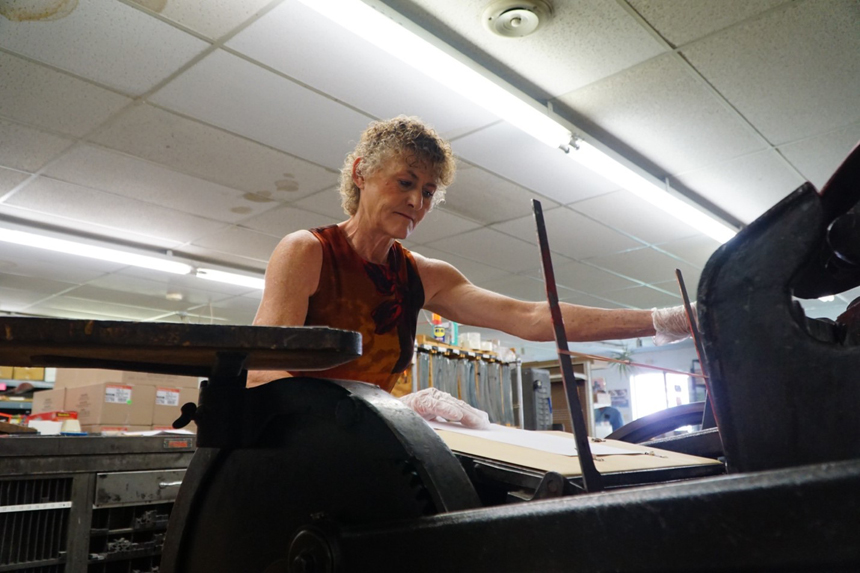
The Race Is On! And Off Again
In 2008, exciting news came to Raton: The track was coming back.
A company called Horse Racing at Raton announced its plans to build a $50 million “racino,” a race track and casino combination. Everything seemed to be working out perfectly, according to a 2009 story in The Pueblo Chieftain. The New Mexico Racing Commission had already approved the plans.
The town was excited. But after two years of development discussions, the state pulled the racing license “because of repeated construction delays and questions about financing,” according to a 2018 story in The Santa Fe New Mexican. Donati and others believe that political forces were against Raton, partly because larger communities were vying for the license at the same time, he says.
“We were within probably 30 days of opening up the racing casino tent out there,” Donati says. “They shut us down.”
To some La Mesa Park fans, the idea of having another track in Raton sounds good. But perhaps it’s better that the track remains only a memory.
“I’d like to see [another track], because I’d like to see the history of my family stay alive, and there will always be horse racing, even though I don’t participate,” Phillips says. “But I also know that you couldn’t re-create what’s gone. La Mesa Park isn’t that building that’s falling down there. If you restored it to its original 1960s glory, it wouldn’t be the same. It was about people in a certain existence in time, when all things were kind of right for horse racing and people.
“If you open it up today, we would probably all go and be disappointed. We’d want a time machine and not a new facility. I think it’d just be different.”
‘On The Rebound’
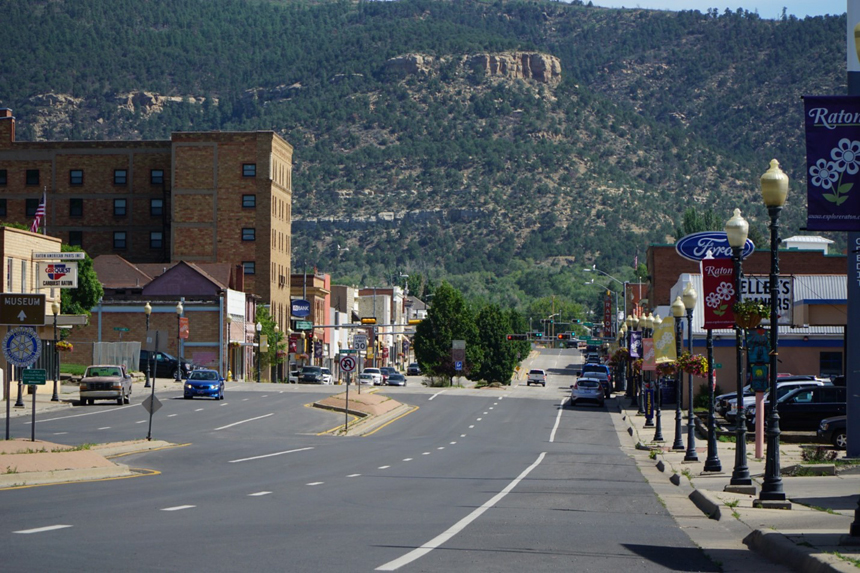
Even without the track, Raton has pressed on and reinvented itself as a cultural destination. Arts-themed businesses line the downtown streets, and the marquee in front of the restored Shuler Theater – a home to community theatrical productions – glistens in the morning sun.
Next door, Donati conducts his morning radio show, “This, That & The Other,” which offers news and commentary from local movers-and-shakers on what’s happening around town. It’s news that he’d like companies and potential residents to know about. “The region, the area, the people, we’re on the rebound,” he says.
Raton offers a slower pace of living, yet it’s rich with both natural resources and recreational opportunities, Donati says. Some seem to be buying in. “We see a lot of new faces,” he says. “A couple years ago, we had 300, maybe 400-plus homes and places for sale. Now, you’ll see maybe a handful that are for sale. People from the cities – Denver, Albuquerque – and California and New York realize what an oasis this is.”
He’s hopeful that Raton can land a sizable industry to help boost the local economy and bring in new families. Whether something could ever rival the impact of the park, however, remains in question. In his mind, nothing could replace it.
“It was the perfect place to race and to spend a summer,” Donati says of the park. “Geography, temperature, and the environment, it all mixed together so, so perfectly. People who raced here earlier have fond, fond memories, and they’re throughout the entire United States, throughout the world.
“They say it will never be like it was, and it probably won’t be. Maybe that’s a good thing, too.”
One-Track Minds
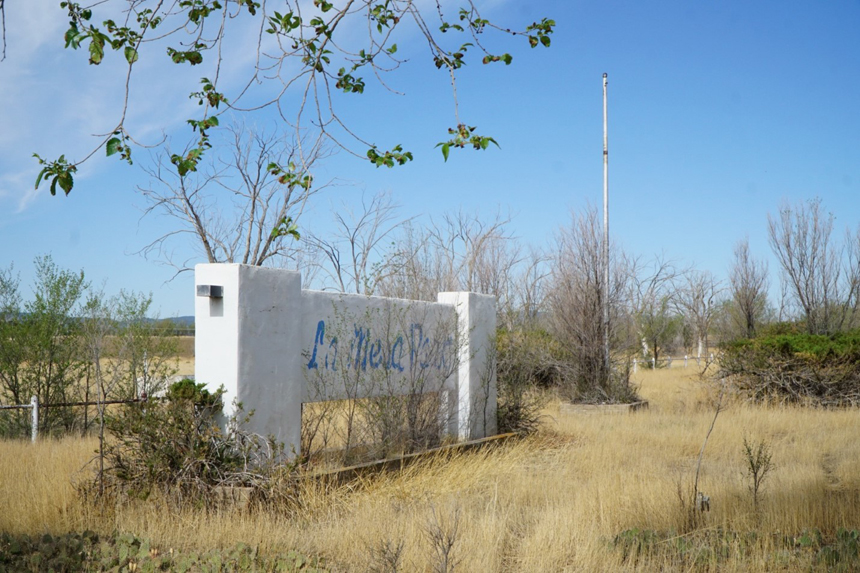
Not all of La Mesa Park’s history is gone. At the Raton Museum, collections steward Roger Sanchez keeps hundreds of black-and-white photos of the track in binders, which guests can browse through. On a metal road sign outside of town commemorating the Santa Fe Trail, La Mesa Park is still marked with a star and a figurine of a cowboy on a horse.
Countless people who worked at the park still tell its tales, and some of horse racing’s most prominent names can trace their roots to Raton. Chip Wooley, who trained 2009 Kentucky Derby champion Mine That Bird, is a Raton native who started his career at the park. Former Tampa Bay Downs announcer Richard Grunder, the longest-tenured track announcer in the U.S., had his first racing job at the park as a photo-finish runner.
Horses may never rush around the track again, but the races are still on in the hearts and minds of La Mesa Park alumni. After all, the hearts and minds of the racers are what made the park “The Friendly Track.” The park was less of a horse-racing facility in New Mexico and more of a place deep within those who raced there – and its story lives on.

“They did a good job of promoting it in the day,” Phillips says. “It was just a lot of good people in one place that had similar interests. Maybe we’ve painted a rosier picture than it was. Maybe it’s that shining city on the hill. But I think a lot of people just love La Mesa Park.”
Become a Saturday Evening Post member and enjoy unlimited access. Subscribe now
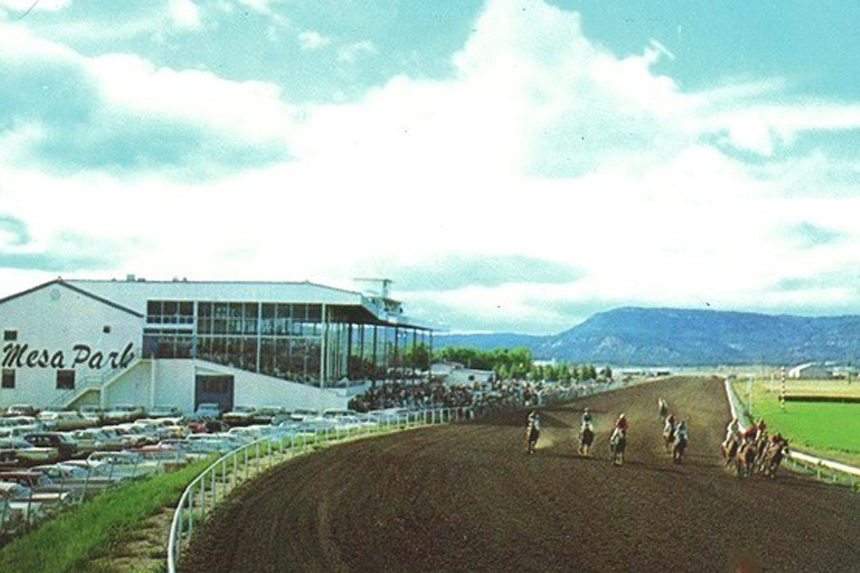



Comments
I read richard avant’s comments with much interest, particularly as his uncle butch avant was my go to rider whenever I raced ay Prescott or Rillito.
My uncle, Tony Mangino, was the General Manager at La Mesa Park for many years up until closing.
I enjoyed watching him walk around through every part of the track.
In the Spring, prior to Opening Day, Tony would make the drive thru all the little towns in the Texas Panhandle leaving passes and brochures. Tony was an excellent “PR man”.
What a great article my father was a real rotor but took a leave of absence in the summer and raced Our small stable in the 60s I rode the Santa Fe train from Dodge city Kansas to raton on weekends walked hots and cleaned stalls and ran photo finishes in the afternoon for a couple of summers in those days there were quite a few people from Kansas that raced there because we did not have horse racing such a beautiful track I was in grade school I remember it like it was yesterday I could not wait to get out of school and go to Raton for the summer
Wish they would just tear the grandstands down. So sad to see a place that had so many good times look this bad. It was the best place…so many jockeys and trainers got their start at La Mesa Park. Seems like everyone either raced there or rode there. It was the best of times…it really was.
This is a wonderful article on good ole La Mesa Park. I earned part of the money that payed for my college education at LMP. Worked for Don Caviness and Ralph Erwin all classmates at RHS I’ll never forget how on big race days cars would line up to get into the track for almost a mile. One of the more interesting things the track did was actually have somebody count every car and record by license plate what state their race fans were from. Texas, of course always won after New Mexico but Co. Okla. & even Kansas were always well represented. When the track started, they raised money by selling stock to hundreds of townspeople at $100 a share. Prior to opening day stockholders always received free passes for the season and that kept the townspeople supporting the track for years. In the early hay days (late 1950’s) many, many Raton residents rented out rooms at the rate of $6 or $8 each as there were not enough motels rooms to begin to house all the tourists. Fun times they were. I still miss them, a lot.
I was there for the 1977 and 1978 racing schedules as a teenager, my father rode and my mother trained, Clifton and Ella Mae Detiege.
I would greatly appreciate if anyone had any photos or media from that time.
Always a favorite time in my life.
I remember going there with my Grandpa to sell Cinnamon Rolls from time to time. My Grandpa owned La Cosina Restaurant and My Mom and Dad owned El Matador Restaurant. The track was a big part of our family as it was for so many others in the area. I truly wished we could have had another shot at the Racino but it’s probably better we didn’t. Everything happens for a reason.
I spent many years working at the track starting as a (Ginny ) for Unk Morgan . Then as a Groom for L.R.(Pat) Thompson Who had horses like She Kitty, Little Cloe to name a few. Pat also Got me My Trainers License for Colorado, Nebraska and Kansas. So I have many fond memories of the La Mesa Park Both Riding as an Exercise boy and some of the dances that were held there. Also, some of the Pictures of the races we won. You can post my email if you want because I would love to hear from anyone connected with those Golden Years
I remember your dad real well as I was the jockeys room Maintence at the time richard was one hell of a rider. Never forget the good Ole days at la mesa all that’s left is memories of what a nice track it was also I believe e. L avant was your dad’s brother he also was a good rider Paul a mares 1957
Not only were the horses off and running on the race days, but so was our dad, Elias M. Sawaya. He and our mom owned the Oasis Restaurant and Motel, which was one of the most popular locals’ and tourists’ restaurants. The Restaurant facilitated the track by selling the Racing Forms and Programs, and had to return any that were unsold. One day, he was so excited to get to the horse races…he left the unsold forms and programs on the top of his car and away he raced…..Forms and programs all over the town! However, he made it in time for the first race! So many fun stories and fond memories that I will always hold close to my heart !
They’re Off! It was magic and real! Race Day at La Mesa, the roar of the crowd, the thunder of horse hooves pounding the track, the flower crowning of the winner. Those were the days, my friends, we thought they’d never end
We raced there when I was a kid. One of my favorite tracks.
Hello
My name is Richard Matthew Avant. Some people who worked at La Mesa Park may remember the last name from the late 1960’s and into the early. 1970’s. You see Raton N.M. and La Mesa Park played a very important role in my existence.. Almost literally.
You see my father is Richard Major Avant. In 1972 I believe he was leading rider there. I was born on August 1,1972 in the hospital in Raton. That year therer was what some called The family connection.. There was Richard M. Avant (my father) , E.L. (Butch) Avant (my uncle), Lyndle Rutherford ( my uncle ) , Jay Rutherford ( my uncle) Lyndle and Jay are my mom’s brothers. My great grand father (Otho Cox) and great uncle were owners and trainers (Bud Cox) runningg horses there that year alsoThe article mentions generations working at La Mesa Park. I myself never rode races there but would have loved to. The year La Mesa Park closed I was a bug boy (apprentice jockey) riding at San Juan Downs. I believe my dad rode there up until around 1976 or 77. I do have some child hood memories of what it was like there.